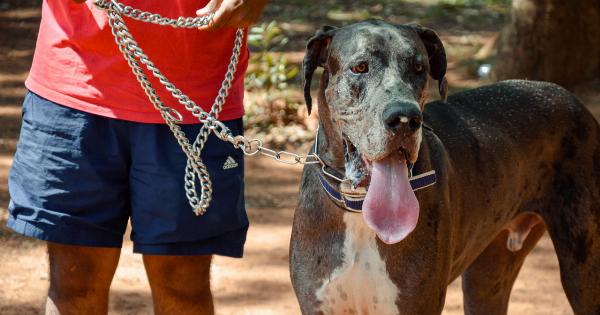Dogs are commonly known as man’s best friend, but unfortunately, they can sometimes exhibit aggressive behaviors and bite. Understanding the triggers for dog bites is crucial for both dog owners and individuals who interact with dogs.
By recognizing the factors that can provoke a dog’s aggressive response, we can take necessary precautions to prevent and reduce the occurrence of dog bites. This article will explore some of the common triggers for dog bites and provide insights into how we can mitigate these incidents.
1. Fear and Anxiety
Fear and anxiety are significant triggers for dog bites. Dogs that feel threatened or scared may resort to aggression as a defense mechanism.
It is important to be mindful of a dog’s body language, such as growling, trembling, or raised hair, as these can indicate fear or anxiety. Approaching a fearful dog abruptly or invading its personal space may escalate its fear and result in a bite. Understanding and respecting a dog’s boundaries can help prevent these situations.
2. Resource Guarding
Resource guarding is another trigger for dog bites. Dogs may feel the need to protect their possessions, including food, toys, or even their sleeping area.
Attempting to take away or approach a dog while it is guarding its resources can result in aggression. It is important to teach dogs proper behavior around resources and to avoid challenging them while they are in possession of something valuable.
3. Pain or Illness
Dogs that are experiencing pain or are unwell may become more prone to aggression and biting. When dogs are suffering, they may feel vulnerable and defensive.
It is crucial to pay attention to any signs of pain or illness in dogs, such as limping, whimpering, or changes in appetite. Seeking veterinary care and providing appropriate pain management can reduce the likelihood of dogs resorting to aggression due to their discomfort.
4. Startle Response
Dogs have a natural startle response, which can be triggered by unexpected loud noises, sudden movements, or surprises. When startled, a dog’s instinct may be to defend itself, which can lead to biting.
It is essential to approach dogs calmly and give them a chance to recognize your presence before making any sudden movements. Avoiding startling a dog can help prevent potential aggression.
5. Territoriality
Dogs are known for their territorial instincts. When they perceive someone or something as a threat to their territory, they may display aggressive behaviors, including biting.
It is crucial to respect a dog’s property and territory, whether it is their home or a space they frequently visit. Avoid intruding or invading their personal space without their acceptance to mitigate any territorial aggression.
6. Lack of Socialization
Proper socialization is vital to ensure that dogs are comfortable and well-adjusted in various environments and social interactions.
Dogs that have not been adequately socialized may become fearful or anxious in unfamiliar situations, leading to aggression and biting. Gradually exposing dogs to different people, animals, and environments from a young age can help them develop positive associations and reduce the likelihood of aggression in unfamiliar situations.
7. Protective Instincts
Dogs have strong protective instincts, especially when it comes to their family or pack. They may perceive any threat or potential harm towards their loved ones and respond aggressively.
It is crucial to be aware of a dog’s protective nature and ensure that they feel secure and supported in their role. Introducing new people or animals to a dog’s environment in a controlled and supervised manner can help minimize any protective aggression.
8. Lack of Training and Discipline
Untrained or poorly trained dogs are more likely to display aggressive behaviors and bite. Dogs that have not received appropriate guidance and discipline may not understand boundaries and acceptable behavior.
Regular training sessions, positive reinforcement, and setting clear rules and expectations can help prevent dogs from resorting to aggression to communicate their needs or frustrations.
9. Prey Drive
Some dog breeds have a naturally higher prey drive, meaning they are more likely to exhibit predatory behaviors. These behaviors can include chasing, nipping, or even biting.
It is essential to understand and manage a dog’s prey drive, especially when interacting with smaller animals or young children. Proper training and supervision can help prevent any unwanted aggressive behaviors resulting from their prey drive instincts.
10. Lack of Proper Rest and Sleep
Just like humans, dogs require adequate rest and sleep to maintain their overall well-being. Sleep-deprived dogs can become irritable and more prone to aggression.
It is essential to provide dogs with a quiet and comfortable space to rest undisturbed and ensure they have sufficient uninterrupted sleep. Avoiding unnecessary disturbances during their resting times can help prevent any potential aggressive reactions.
Conclusion
Identifying triggers for dog bites is crucial for promoting safety and preventing dog-related incidents. By understanding the factors that can provoke aggressive behaviors in dogs, we can take appropriate measures to reduce the likelihood of bites.
Sensible dog ownership, proper training, socialization, and respect for a dog’s boundaries are essential in creating a harmonious and safe environment for both dogs and humans.


























